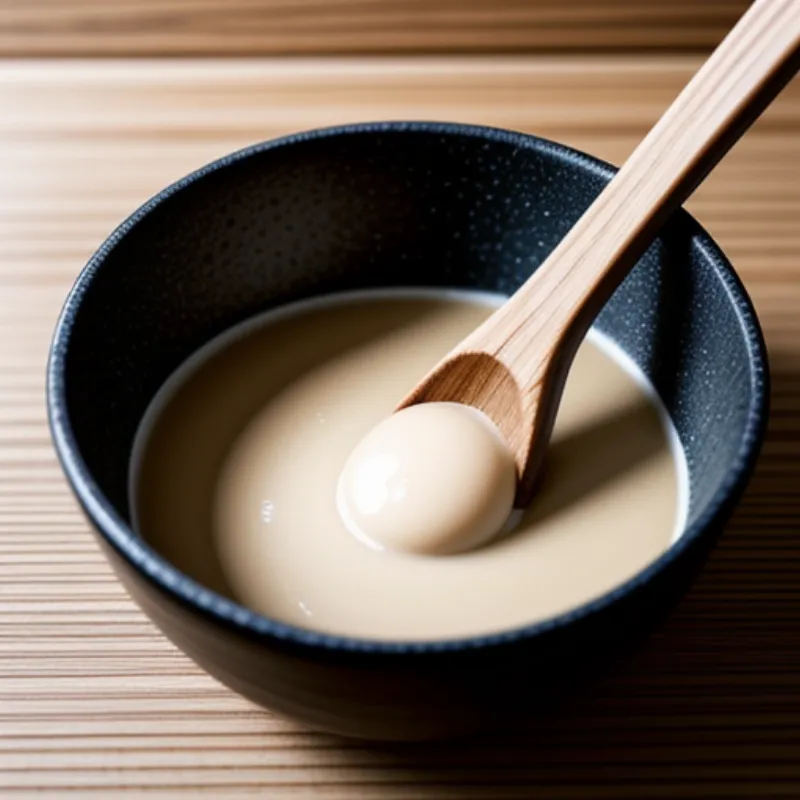Miso – that deeply savory, umami-rich paste – is a cornerstone of Japanese cuisine and a flavor revelation waiting to happen in your kitchen. While the process of making miso might seem intimidating at first glance, we’re here to guide you through every step, proving that homemade miso is not only achievable but incredibly rewarding.
Imagine the satisfaction of scooping out a spoonful of your very own fermented magic, ready to elevate soups, marinades, dressings, and even desserts. In this comprehensive guide, we’ll demystify the art of miso making, equipping you with the knowledge and confidence to craft your own batch of this umami gold.
Gathering Your Miso Making Ingredients
The beauty of miso lies in its simplicity. With just a handful of ingredients, you can embark on this flavor-packed fermentation journey:
- Soybeans: 2 cups, preferably organic and non-GMO (You can also experiment with other legumes like chickpeas or adzuki beans for unique flavor profiles).
- Koji: 1 cup (Koji is steamed rice inoculated with Aspergillus oryzae mold, the magical ingredient responsible for the fermentation process. You can find koji online or at specialty Asian grocery stores.)
- Sea Salt: 1/2 cup (Use a good quality sea salt without any additives).
- Water: As needed
Essential Tools for Miso Making
Before we dive into the process, gather these tools to ensure a smooth and successful miso-making experience:
- Large pot
- Colander
- Large bowl
- Food processor or meat grinder
- Sterilized glass jar (at least 1-quart size)
- Cheesecloth
- Rubber band
- Weight (such as a zip-top bag filled with salt or dried beans)
Step-by-Step Guide to Crafting Homemade Miso
Now that you have your ingredients and tools ready, let’s embark on the exciting journey of making miso!
1. Preparing the Soybeans
- Rinse the soybeans thoroughly under cold water.
- Place the soybeans in a large pot and cover with water by at least 3 inches.
- Soak the soybeans overnight, or for at least 12 hours. This helps to soften them and prepare them for cooking.
2. Cooking the Soybeans
- Drain the soaked soybeans and rinse them again.
- Return the soybeans to the pot and add enough fresh water to cover them by about 2 inches.
- Bring the water to a boil over high heat, then reduce the heat to medium-low and simmer for 3-4 hours, or until the soybeans are tender but not mushy. (You should be able to easily crush a soybean between your fingers.)
 Cooking Soybeans for Miso
Cooking Soybeans for Miso
3. Crushing and Mixing
- Drain the cooked soybeans, reserving the cooking liquid.
- While the soybeans are still warm, grind them into a paste using a food processor or meat grinder. If you prefer a chunkier miso, you can mash the soybeans by hand instead.
- In a large bowl, combine the ground soybeans, koji, and salt. Mix thoroughly using clean hands until all the ingredients are evenly distributed.
4. Packing the Miso
- Gradually add small amounts of the reserved soybean cooking liquid to the miso mixture, mixing well after each addition. The goal is to achieve a firm, moldable consistency, similar to Play-Doh. (Add more liquid if the mixture seems too dry, or use less if it’s too wet.)
- Line the sterilized glass jar with cheesecloth, leaving some overhang.
- Press the miso mixture firmly into the jar, eliminating any air pockets. (Air pockets can encourage the growth of unwanted mold.)
- Fold the cheesecloth over the top of the miso and secure it with a rubber band.
- Place the weight on top of the cheesecloth to keep the miso submerged beneath the surface.
5. Fermenting the Miso
- Store the jar in a cool, dark place, ideally between 50-65°F (10-18°C).
- Miso fermentation time can vary depending on the ambient temperature and the desired flavor profile. A good starting point is 6 months, but you can ferment it for longer – even up to a year or more – for a deeper, more complex flavor.
 Miso Fermenting
Miso Fermenting
Tips and Tricks for Successful Miso Making
- Sterilization is key: Make sure your jar, utensils, and hands are clean to prevent the growth of unwanted bacteria or mold.
- Salt control: The amount of salt used not only affects the flavor but also acts as a natural preservative. Using less salt can result in a faster fermentation but may require refrigeration once the miso is ready.
- Taste and adjust: As the miso ferments, it’s a good idea to taste it periodically. If it seems too salty, you can add more cooked soybeans or rice to balance the flavor.
Presenting Your Homemade Miso
Once your miso has fermented to your liking, it’s time to celebrate your culinary achievement! Store it in the refrigerator to slow down further fermentation.
Here are a few ways to enjoy your homemade miso:
- Miso Soup: The classic way to savor miso’s umami depth.
- Miso Glaze: Whisk miso with mirin and sake for a delectable glaze for fish or vegetables.
- Miso Dressing: Combine miso with rice vinegar, sesame oil, and ginger for a flavor-packed salad dressing.
For a delightful twist on traditional salad dressings, try our recipe for Miso Ginger Dressing.
FAQs About Making Miso
Q: Can I use a different type of bean for making miso?
A: Absolutely! While soybeans are traditional, experimenting with chickpeas, adzuki beans, or even lentils can lead to unique and delicious miso variations.
Q: My miso has some white spots on it. Is it still safe to eat?
A: White spots on miso are usually a harmless type of yeast called kahm yeast. It’s generally safe to scoop off the top layer and consume the miso underneath. However, if you notice any fuzzy green or black mold, it’s best to discard the entire batch.
A Culinary Adventure Awaits
Making miso is a journey of patience, experimentation, and ultimately, pure culinary satisfaction. As you embark on your own miso-making adventure, remember that every batch is unique, reflecting your personal touch and the magic of fermentation. So, gather your ingredients, roll up your sleeves, and prepare to unlock a world of flavor with the simple art of homemade miso!
 Homemade Miso
Homemade Miso
We encourage you to share your miso-making experiences, experiments, and questions in the comments below. Happy fermenting!
